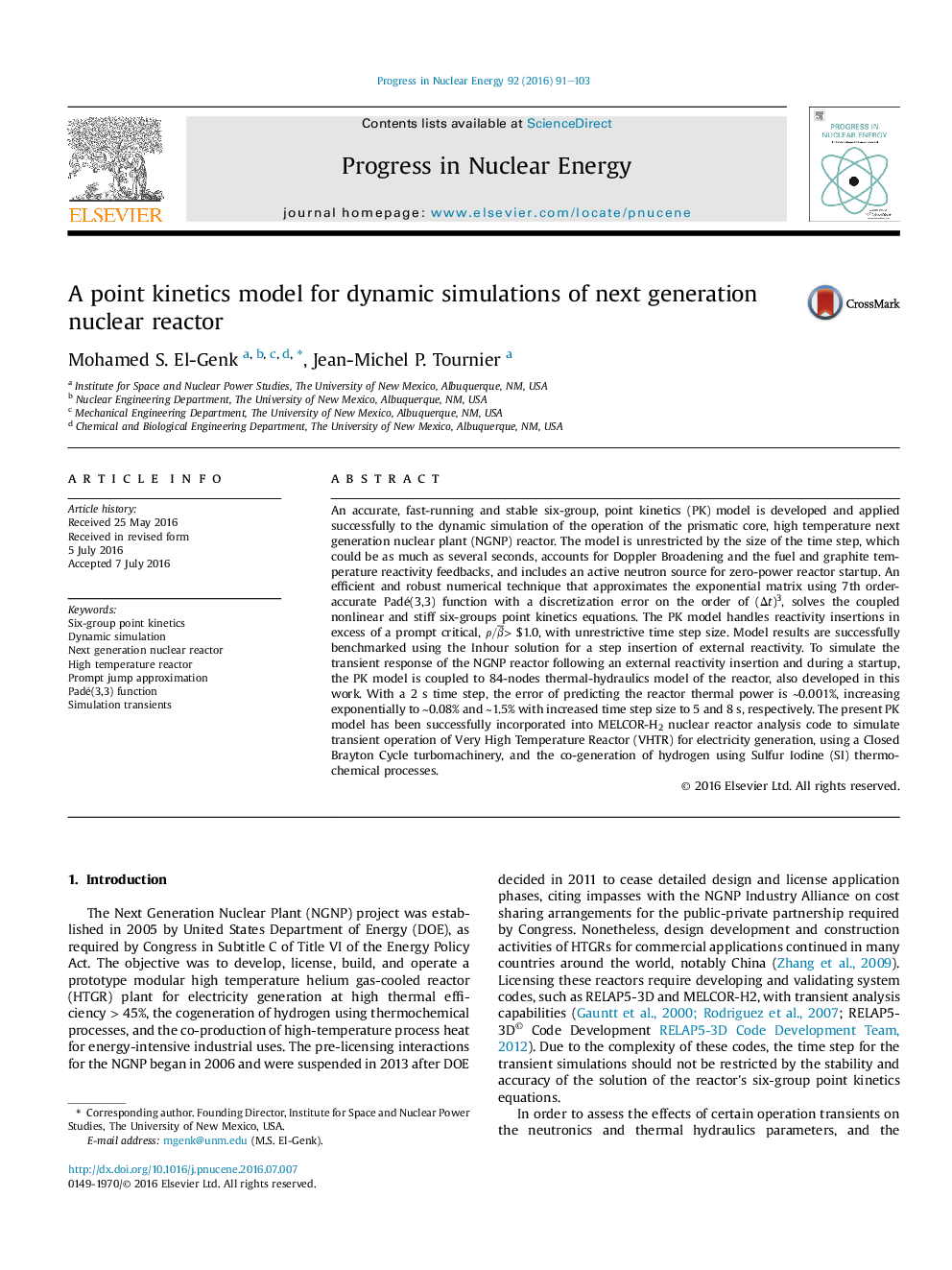| Article ID | Journal | Published Year | Pages | File Type |
|---|---|---|---|---|
| 1740275 | Progress in Nuclear Energy | 2016 | 13 Pages |
•Developed robust approximate solution of the six-group kinetics equations.•Applied developed kinetics model to dynamic operation of NGNP reactor.•Model's non-restrictive time step and accuracy are demonstrated.•Results of dynamic simulation of NGNP are presented.
An accurate, fast-running and stable six-group, point kinetics (PK) model is developed and applied successfully to the dynamic simulation of the operation of the prismatic core, high temperature next generation nuclear plant (NGNP) reactor. The model is unrestricted by the size of the time step, which could be as much as several seconds, accounts for Doppler Broadening and the fuel and graphite temperature reactivity feedbacks, and includes an active neutron source for zero-power reactor startup. An efficient and robust numerical technique that approximates the exponential matrix using 7th order-accurate Padé(3,3) function with a discretization error on the order of (Δt)3, solves the coupled nonlinear and stiff six-groups point kinetics equations. The PK model handles reactivity insertions in excess of a prompt critical, ρ/β¯> $1.0, with unrestrictive time step size. Model results are successfully benchmarked using the Inhour solution for a step insertion of external reactivity. To simulate the transient response of the NGNP reactor following an external reactivity insertion and during a startup, the PK model is coupled to 84-nodes thermal-hydraulics model of the reactor, also developed in this work. With a 2 s time step, the error of predicting the reactor thermal power is ∼0.001%, increasing exponentially to ∼0.08% and ∼1.5% with increased time step size to 5 and 8 s, respectively. The present PK model has been successfully incorporated into MELCOR-H2 nuclear reactor analysis code to simulate transient operation of Very High Temperature Reactor (VHTR) for electricity generation, using a Closed Brayton Cycle turbomachinery, and the co-generation of hydrogen using Sulfur Iodine (SI) thermochemical processes.
